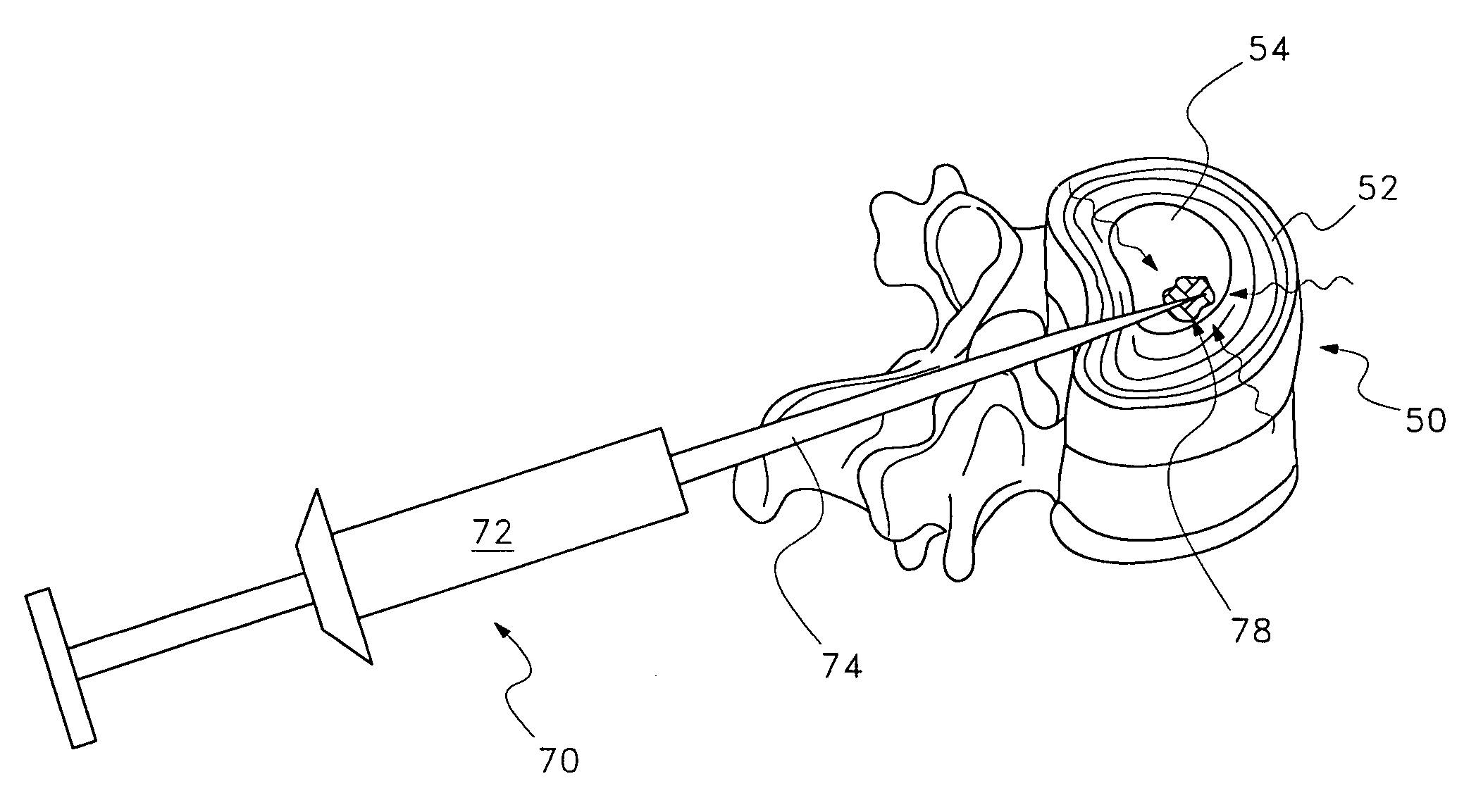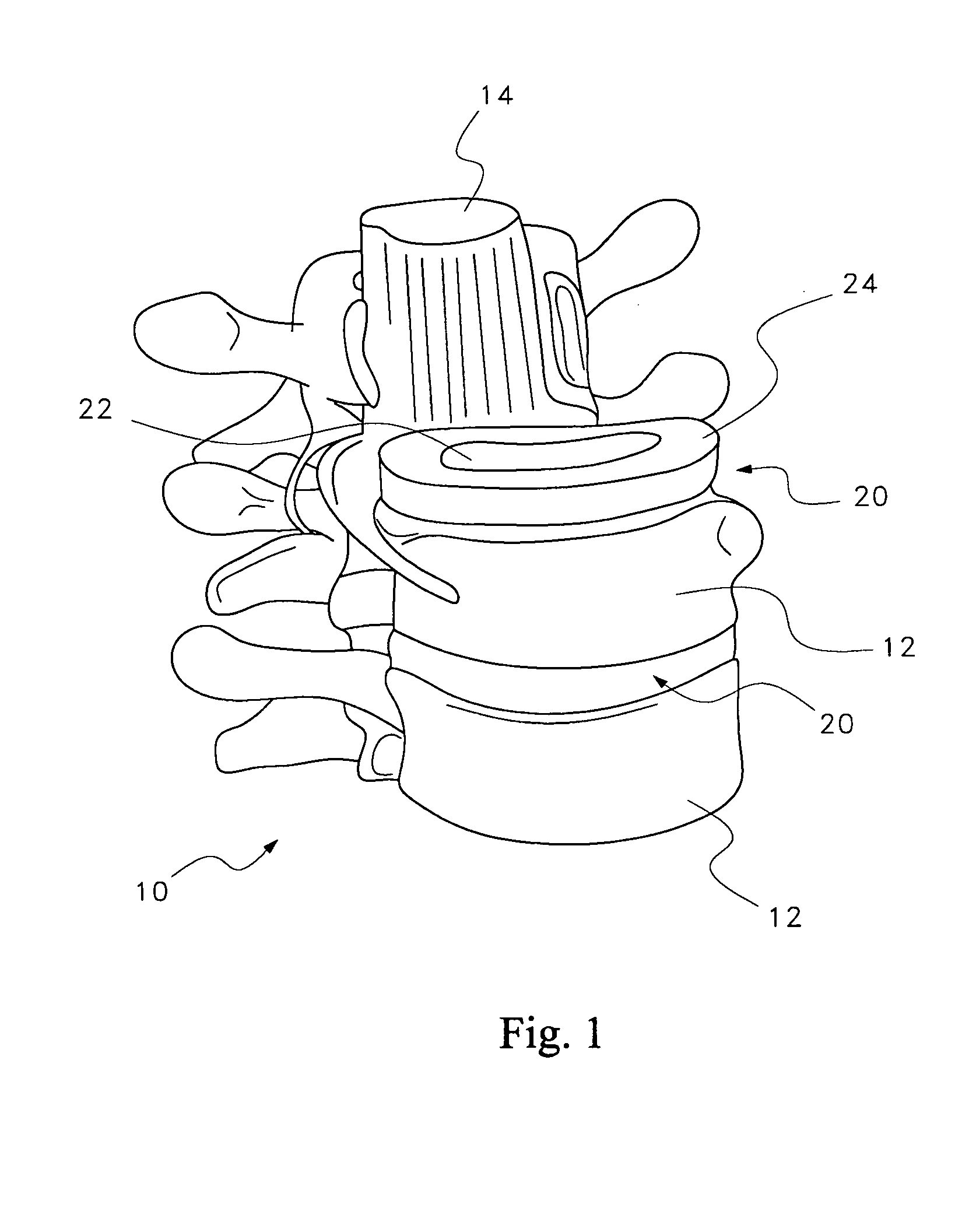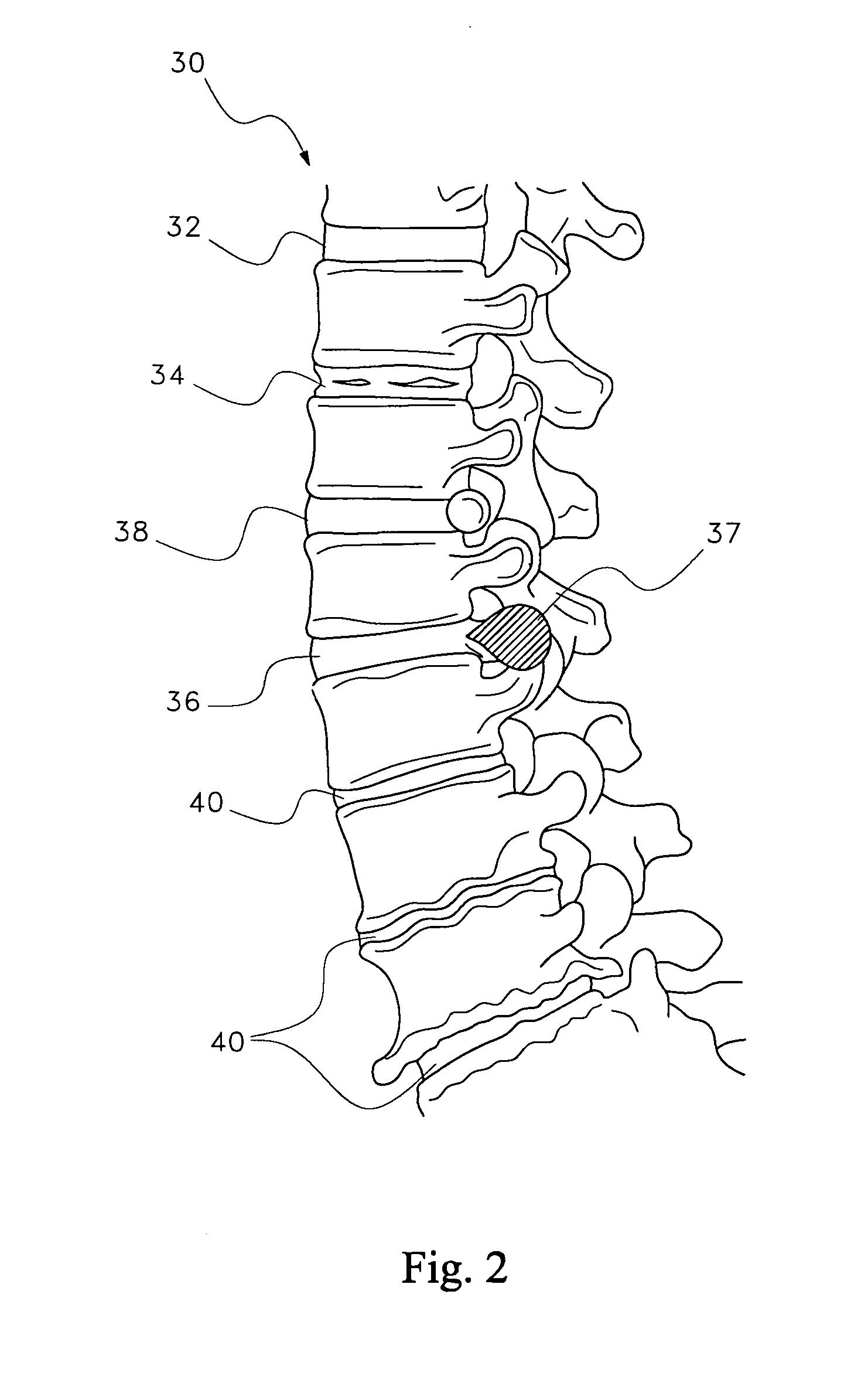Hygroscopic treatment for degenerating discs
a technology for degeneration discs and hygroscopic treatment, which is applied in the direction of prosthesis, catheters, diagnostic recording/measuring, etc., can solve the problems of high social costs, high productivity, and high cost of spine-related pain, and achieve the effect of promoting tissue hydration within the dis
- Summary
- Abstract
- Description
- Claims
- Application Information
AI Technical Summary
Benefits of technology
Problems solved by technology
Method used
Image
Examples
Embodiment Construction
[0015]The terms “include,”“comprise,”“for example” or the like are intended in the following to be inclusive, rather than limiting. Hence, when presented, and unless indicated otherwise, lists of compounds, substances, or the like present merely exemplary subsets of potentially much larger sets. Items not listed but having characteristics known to be compatible in the context of those listed should also be understood to be within the ambit of the instant disclosure.
[0016]Used herein, “hygroscopic” indicates a substance that has an affinity for water. The term “hygroscopic” as used herein is interchangeable with the term “hydroscopic.” A hygroscopic agent is a therapeutic composition comprising a hygroscopic compound and designed to at least attract water to itself. That is, the hygroscopic compound should readily absorb water from its surroundings. As known in the art, the moisture content of a product can be defined as the percentage weight of water in relation to the dry weight of...
PUM
| Property | Measurement | Unit |
|---|---|---|
| molecular weight | aaaaa | aaaaa |
| RH | aaaaa | aaaaa |
| RH | aaaaa | aaaaa |
Abstract
Description
Claims
Application Information
 Login to View More
Login to View More - R&D
- Intellectual Property
- Life Sciences
- Materials
- Tech Scout
- Unparalleled Data Quality
- Higher Quality Content
- 60% Fewer Hallucinations
Browse by: Latest US Patents, China's latest patents, Technical Efficacy Thesaurus, Application Domain, Technology Topic, Popular Technical Reports.
© 2025 PatSnap. All rights reserved.Legal|Privacy policy|Modern Slavery Act Transparency Statement|Sitemap|About US| Contact US: help@patsnap.com



